Palladio: Humanities thinking about data visualization
A guest post by Mark Braude, Postdoctoral Research Fellow / Project coordinator, Humanities + Design, Center for Spatial and Textual Analysis (CESTA), Stanford
An Overview of Palladio
Palladio (palladio.designhumanities.org) is a web-based platform that allows any researcher to upload, visualize, and analyze complex and multi-dimensional data, directly in a web browser. The Palladio visualization system combines a primary view with filters to make it easy to query a data set. There is no need to create an account and nor do we store any data. Any work done in the browser can be saved and shared as a Palladio Project, which takes the form of a .json file.
Views and Filters
The views available are: Map View, Graph View, List View, and Gallery View. Palladio’s TimeLine and TimeSpan filters encourage filtering and sorting temporal data, and allows the filtering of two or more discontinuous time periods. A Facet filter is also particularly useful when exploring multidimensional data sets and drilling down to specific aspects of one’s data.
Example Scenarios
I’ve written up a few examples below, using my own research into the history of the Monte Carlo casino-resort, founded in 1863. My data-set (a work in progress) includes biographical information about several key historical actors in this history, as well information about key sites of sociability (ie. The casino, hotels, churches restaurants, clubs etc.) in the resort itself. The examples below are focused on the biographical data.
Scenario 1: A Look At The Whole
In the Map View you can see any coordinates data as points on a map. Relationships between points can be connected by lines, with the arc of the line representing the flow of the relationship. In this visualization, I’m displaying every historical actor who appears in my dissertation. Here we are seeing each individual’s place of birth, all leading to the central point of Monaco. The point is a fairly straightforward one: to show the truly international scope of this resort’s appeal. If I were to apply Palladio’s time filters and drag across time from left to right we would see these nodes spreading outward, first from France and Western Europe at the resort’s founding in the 1860s and then out to a global level by the late 19th century.
Scenario 2: Tracing Connections
In the Graph view you can visualize relationship between any two dimensions of your data. Graph information will be displayed as nodes connected by lines. This network graph plots out all the actors in my dissertation research sorted by social categories. Certain actors will fall into more than one category. Again, this visualization could be adjusted by applying filters.
Scenario 3: A visual Compendium
In the Gallery view, data can be displayed within a grid setting for quick reference. This visualization provides an overview of the various actors involved in my research, including biographical information. Each individual has been linked to outside web based information that is also directly accessible by clicking on each item.
Other Images
I’ve included the following images to give you a sense of the Upload and Refine stages, as well as the TimeLine and TimeSpan filters, but these are best understood by visiting hdlab.stanford.edu and exploring the documentation and tutorials.
Upload Stage
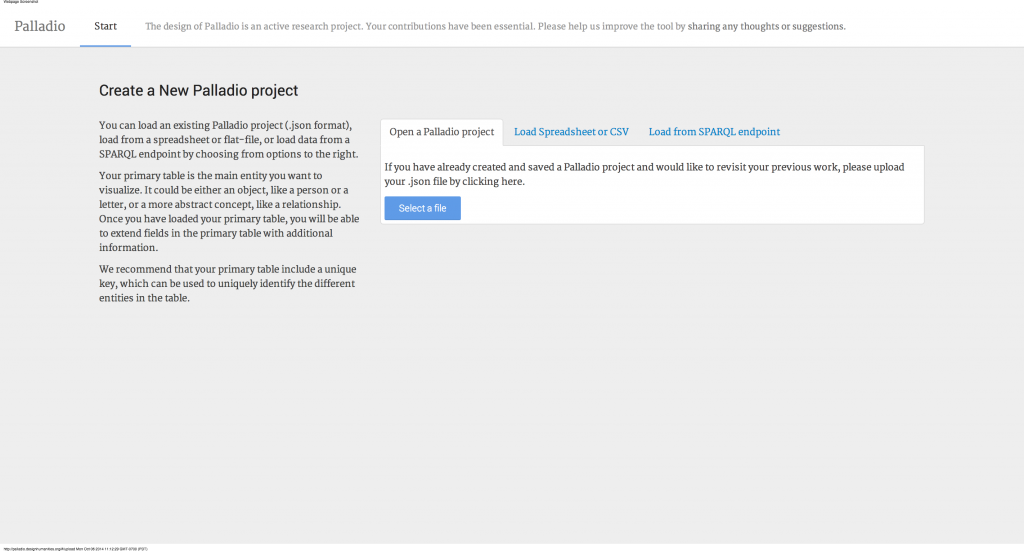
Refine Stage
TimeLine / TimeSpan Filters
Team / Project Background
Palladio is made possible by support from the Office of Digital Humanities within the National Endowment for the Humanities, the Vice Provost for Online Education at Stanford, the Wallenberg Foundation, the Stanford University Libraries, and the Dean of Research at Stanford. Palladio is a product of the “Networks in History” project that has its roots in another humanities research project based at Stanford: Mapping the Republic of Letters. We believe that visualization techniques designed by humanists can best serve humanities research. Palladio’s design and development is driven by the feedback we receive from scholars. All the code written for this project will ultimately be open source.
Learn about Palladio and Humanities + Design
hdlab.stanford.edu
Use the Tool
palladio.designhumanities.org
Humanities + Design / Palladio Core Team
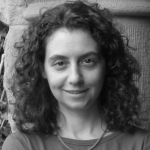
Giovanna Ceserani, Stanford, Faculty director
Nicole Coleman, Stanford, Research director
Mark Braude, Stanford, Postdoctoral Research Fellow / Project coordinator
Giorgio Caviglia, Stanford, Postdoctoral Research Fellow / Lead design researcher
Ethan Jewett, Coredata, Lead developer
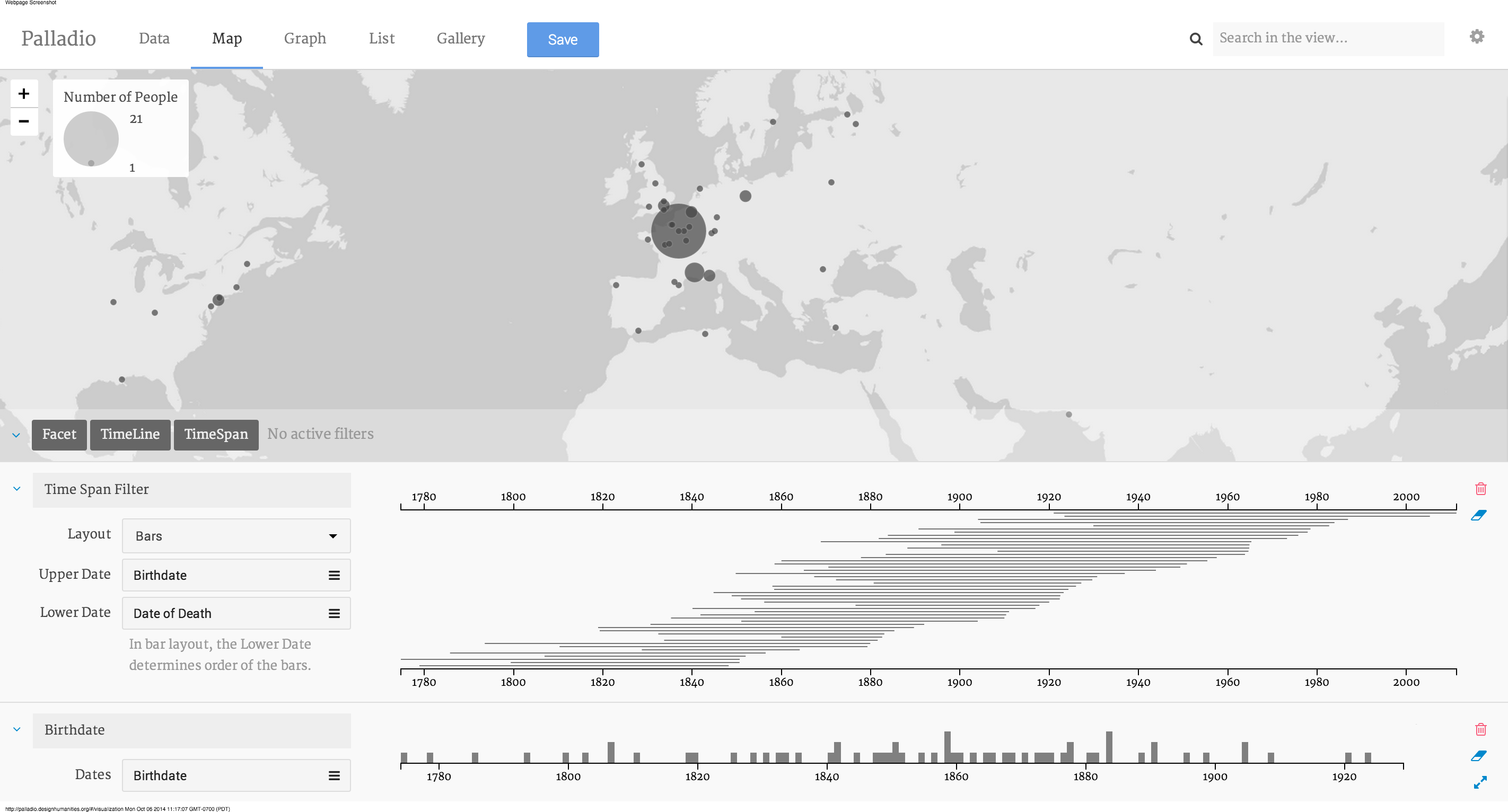
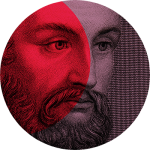
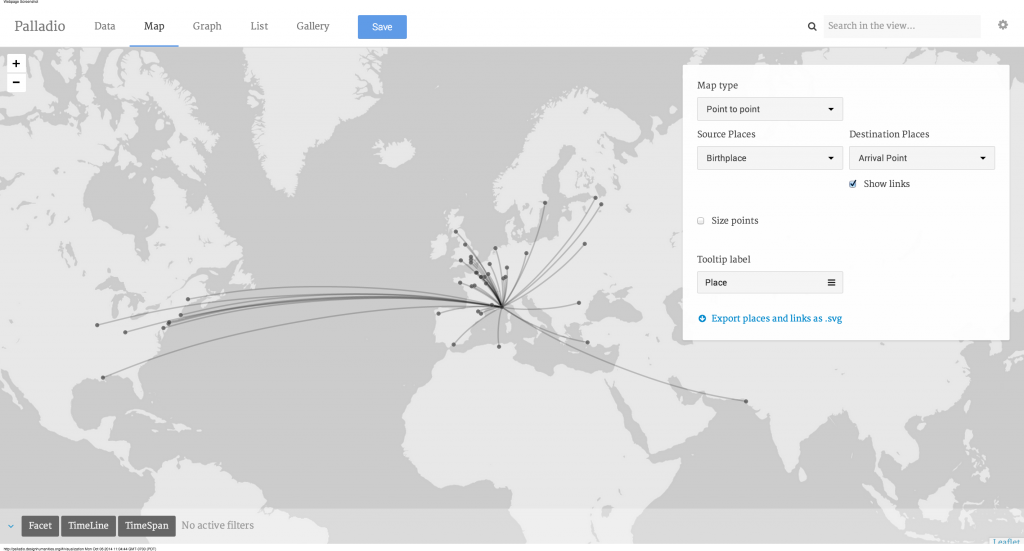

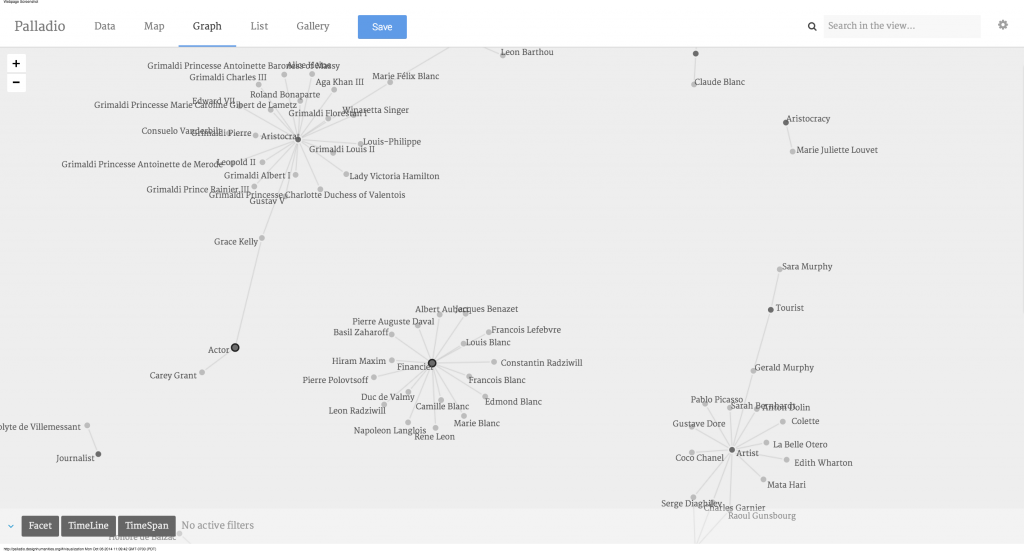
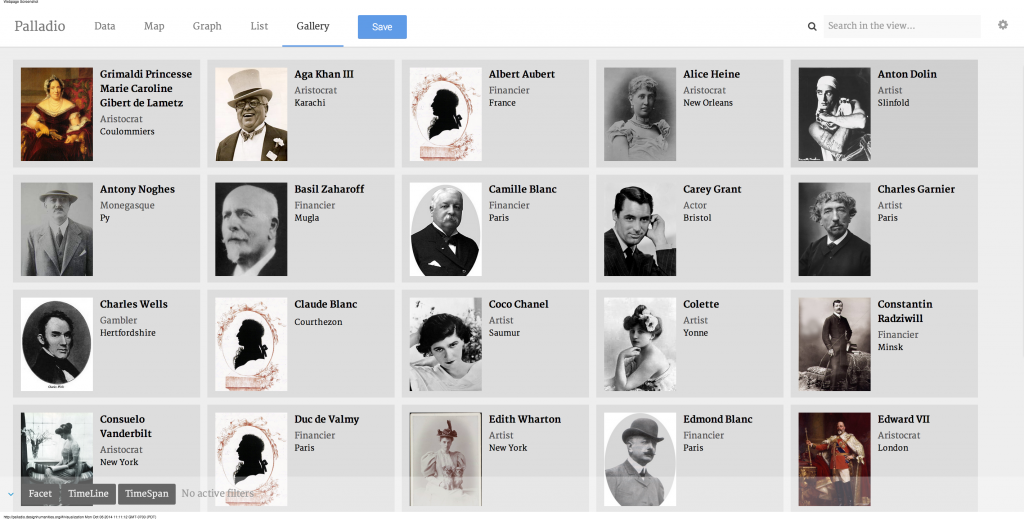
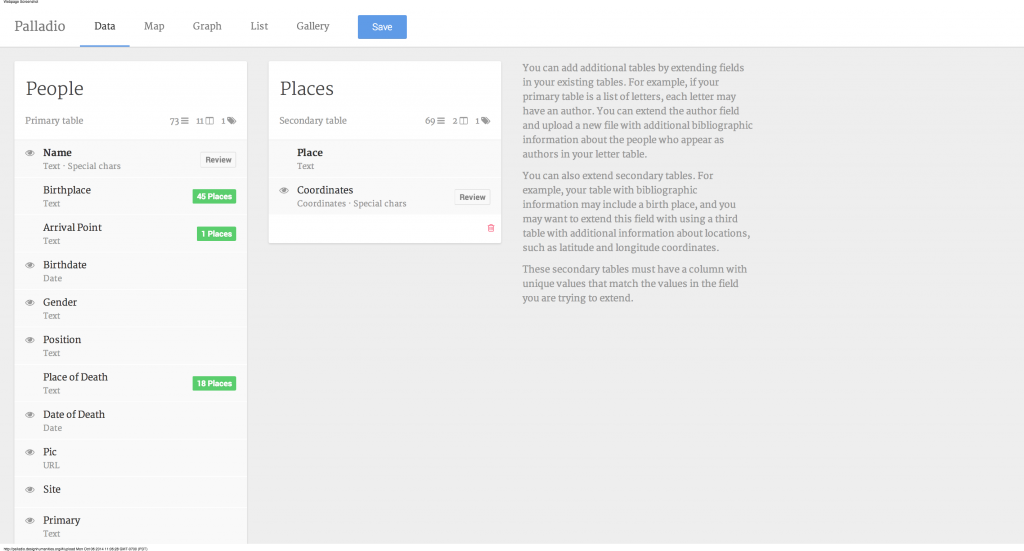
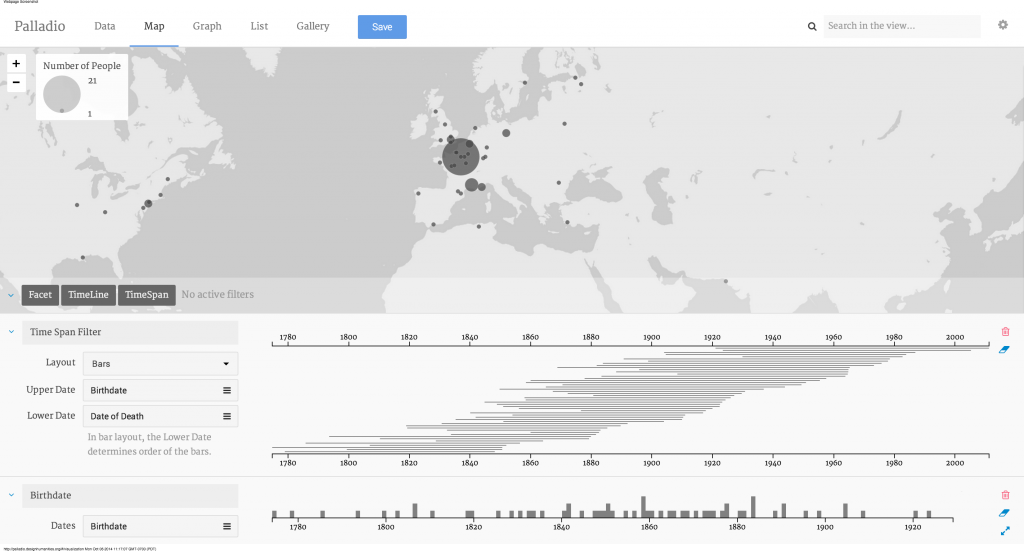









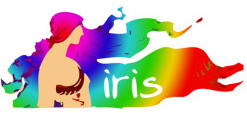

You must be logged in to post a comment.